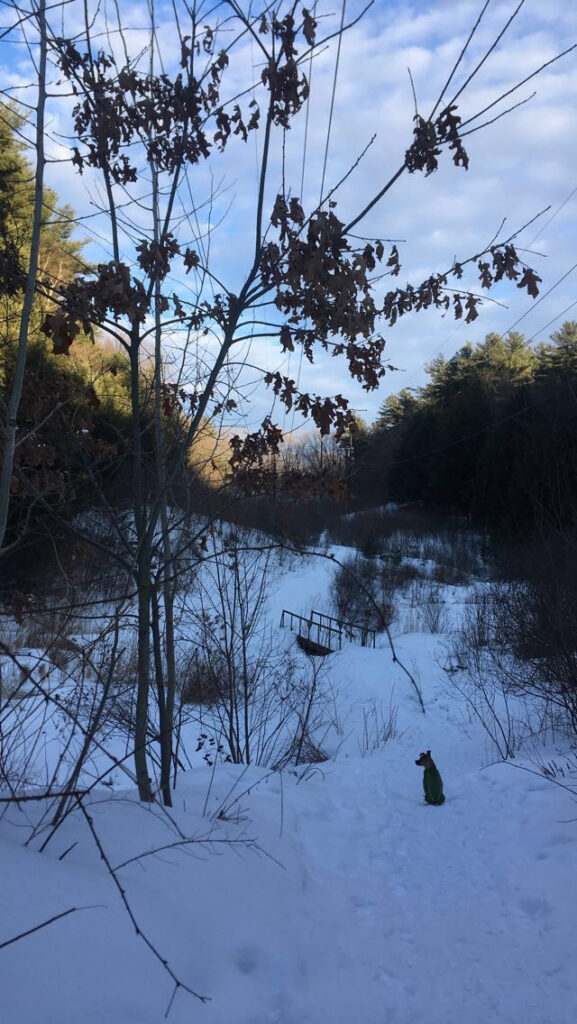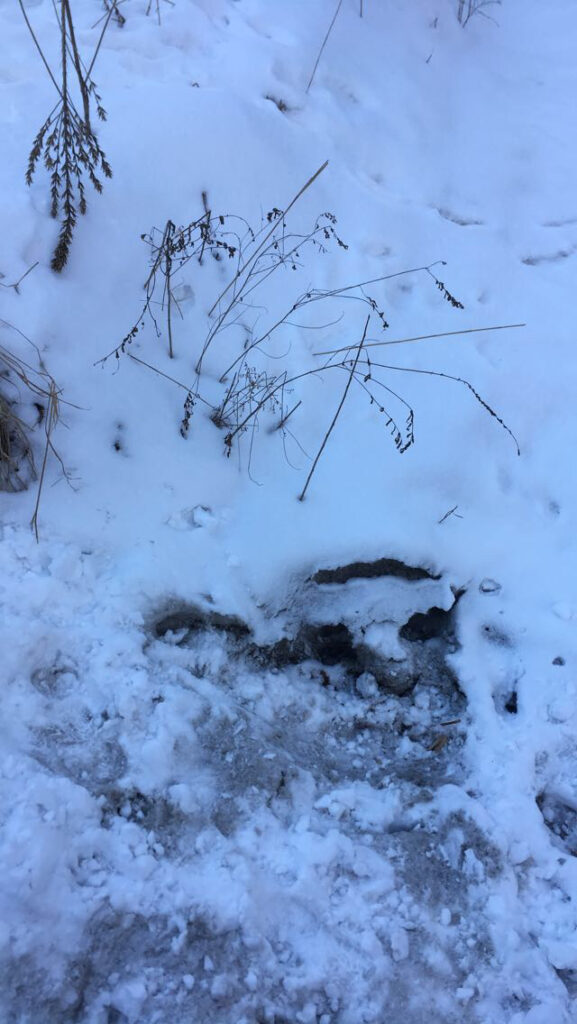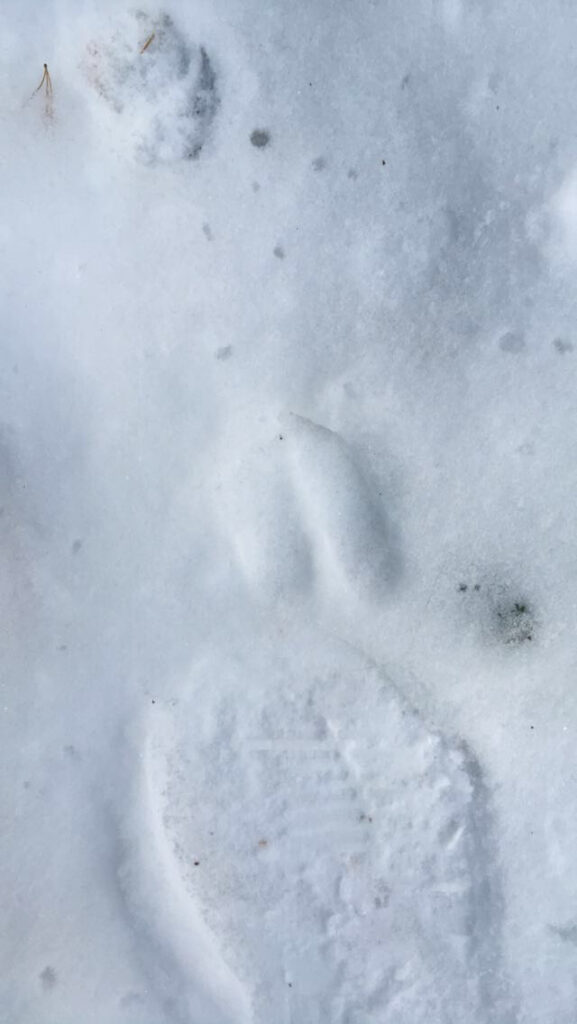While home for spring break I spent some time at a local county park/reservation observing a familiar home natural community similarly to how I examine my site in Centennial Woods at UVM.
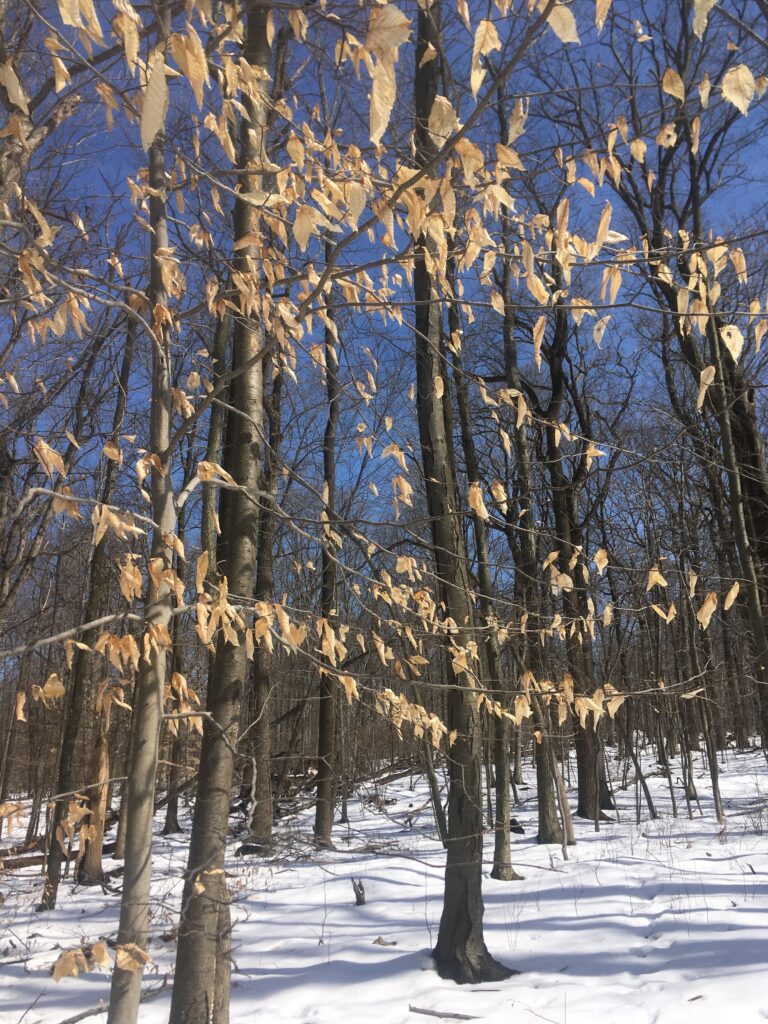
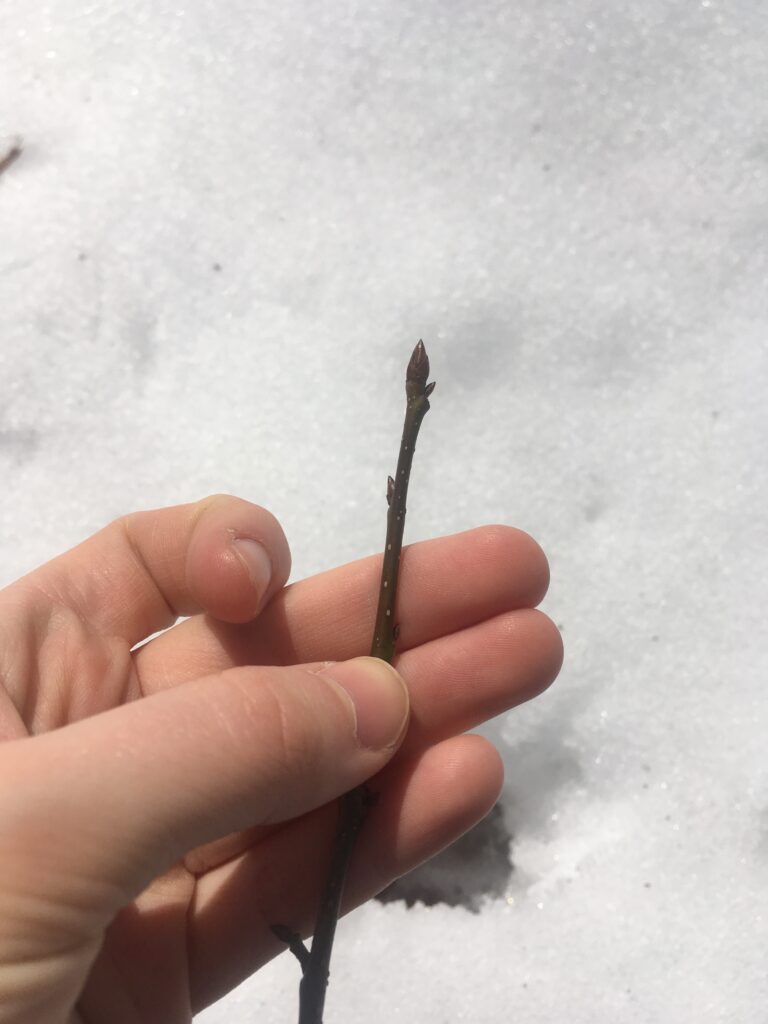
As can be seen above, this area of the reservation, which is a 157 acre area of protected wooded land, still had a decent layer of snow and a variety of tree species. Some dominant species I observed were American Beech (which can be seen in the photo with all of its leaves intact, one of the few deciduous species which retains its leaves through the cold winter months), and Red Oak (which can be seen as the twig to the right).
Overall this tree species composition was pretty different to my site in Burlington. There were no conifers present at all, and seemed to be much higher rates of oaks with very few maples. In terms of tracking, the only tracks I was able to find besides humans and lots of dogs were many deer hoof prints (pictured below). I found it surprising that even in the impressionable snow I didn’t see any smaller tracks, no mice or squirrels. I’ve never had a winter trip to Centennial without seeing any small animal tracks. I think this may be a sign that the higher levels of human impact and development in New Jersey mean lower biodiversity and animal population health. Though the deer prints may seem like a good sign, this concerns me too as we have an overpopulation of deer in the suburbs around my town since so many are being pushed out of forested land and learning to live in towns, often taking refuge in the few wooded areas like Mills Reservation- hence the high deer traffic in these woods.
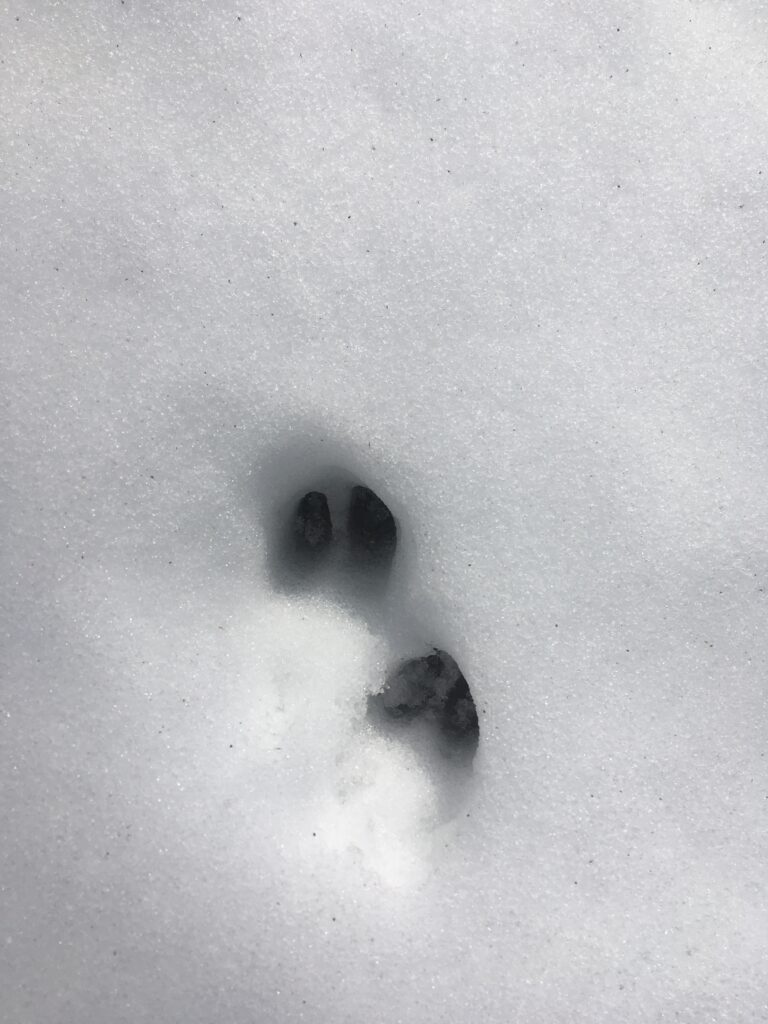
From my research I discovered that Mills Reservation is also rich in human history. The park includes a large cliff side that gives beautiful views of the New York City skyline, making it a notable spot. Apparently the cliff edge may have been used as a fire-beacon station for George Washington during the Revolutionary War, who was perhaps unknowingly passing on tradition as native peoples likely used it for smoke signaling as well. Additionally this high visibility cliff was used during World War II as a center for searchlights and anti-aircraft guns. Today the area is simply a well-used recreational space that shows no signs of its past, so it was interesting to learn some of these stories.

